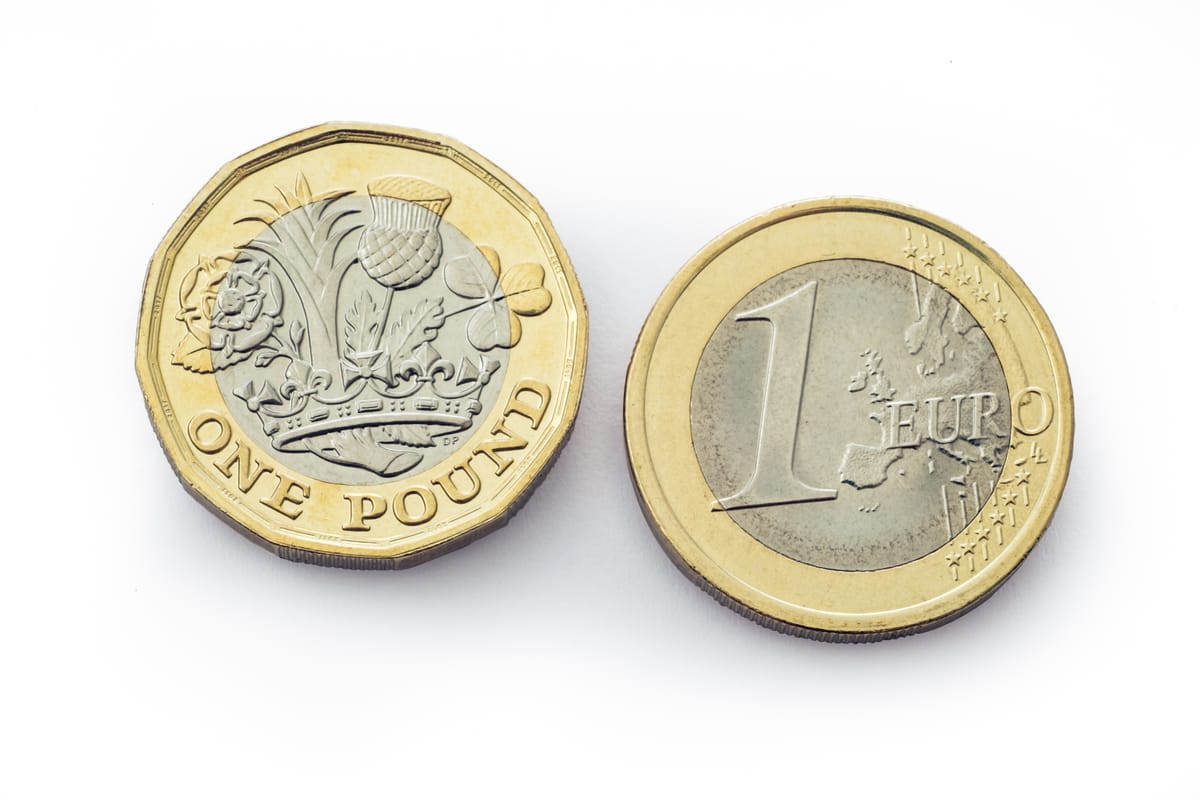GBP/EUR exchange rate week review: pound rebounds against euro following upbeat UK GDP and retail data
The pound euro (GBP/EUR) exchange rate recovered from a sharp dip following the publication of upbeat UK GDP and retail sales data.

(12/08/2024 to 16/08/2024)
Monday
The pound euro (GBP/EUR) exchange rate fluctuated close to a one-week high, a fraction below 1.17, following remarks about the UK’s labour market from Bank of England (BoE) rate-setter Catherine Mann. Her comments around new wage agreements had a hawkish tint.
The euro traded without a clear trajectory amid a lack of Eurozone data.
Tuesday
The pound jumped to a one-week high against the euro above 1.17 after the publication of a stronger-than-forecast UK labour report.
News that the UK's unemployment rate fell slightly in the second quarter, printing below market forecasts, and wage growth came in above expectations, led investors to scale back BoE rate cut bets, boosting the pound.
Meanwhile, the single currency was undermined by a sharp above-forecast decline in Germany’s ZEW economic sentiment index for August.
Wednesday
The pound euro rate sunk into the 1.16 mid-range after below-forecast UK inflation data paved the way for more BoE interest rate cuts this year, denting the pound. Overall prices increased by 2.2% in the year to July, slightly above the BoE’s 2% where the rate had been since May.
Contact a currency specialist to discover how they can help you take control of exchange rates.
Thursday
The pound rebounded above 1.17 following the publication of the UK’s latest GDP reading.
As expected, the domestic economy continued its recovery from recession after posting growth of 0.6% in the second quarter, following a rise of 0.7% in the first three months of the year.
Increasing risk appetite and a lack of Eurozone data meant the safe-haven euro struggled to garner investor attention.
Friday
The pound continued to trend higher, reaching the 1.17 mid-range after data showed British retail sales rebounded in July.
The amount of goods purchased in Britain rose 0.5% between June and July as forecast, following a revised 0.9% contraction in the previous month. According to the ONS, which compiled the data, the recovery was “led by increases in department stores and sports equipment shops”.
The upbeat retail data could ease the pressure on the BoE to enact another interest rate cut in the near term.
Dollar strength left the euro muted due to its negative trading correlation with the US currency. This was compounded by a dip in consumer confidence in the Eurozone and sluggish manufacturing activity in the bloc.
Looking ahead
A raft of market-moving data hits the headlines on Thursday: HCOB Composite PMI for Germany, HCOB Composite PMI for the Eurozone and the S&P Global/CIPS Composite PMI from the UK.
BoE Governor Andrew Bailey is scheduled to make a speech on Friday. Investors in the pound will listen for clues about the probability of further policy loosening from the central bank.
